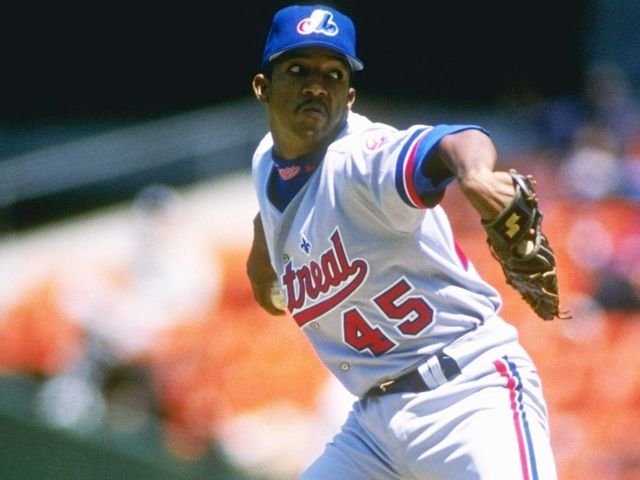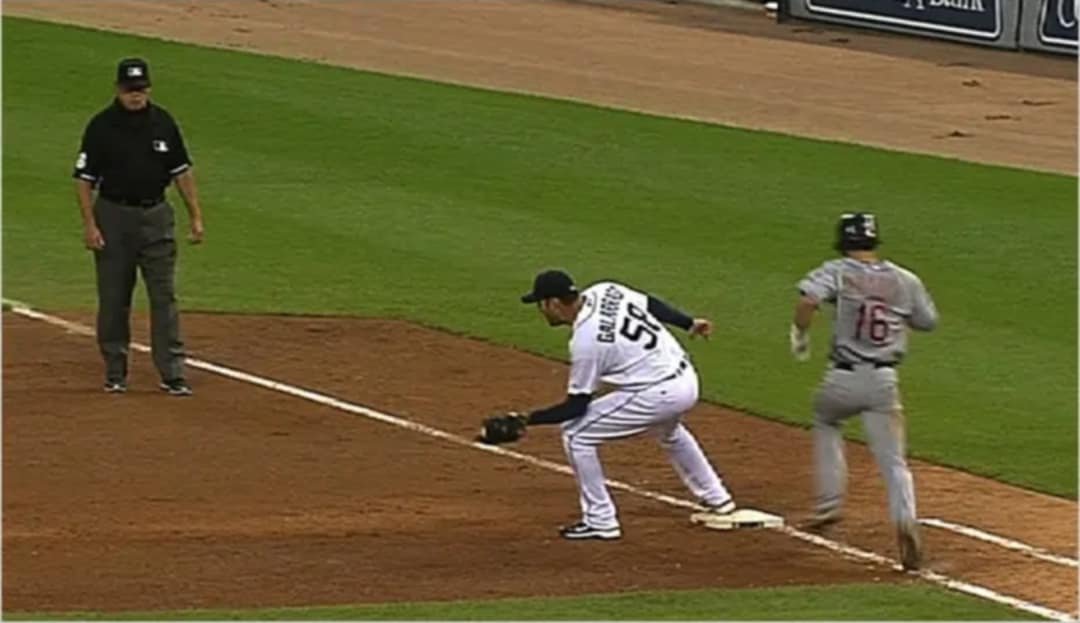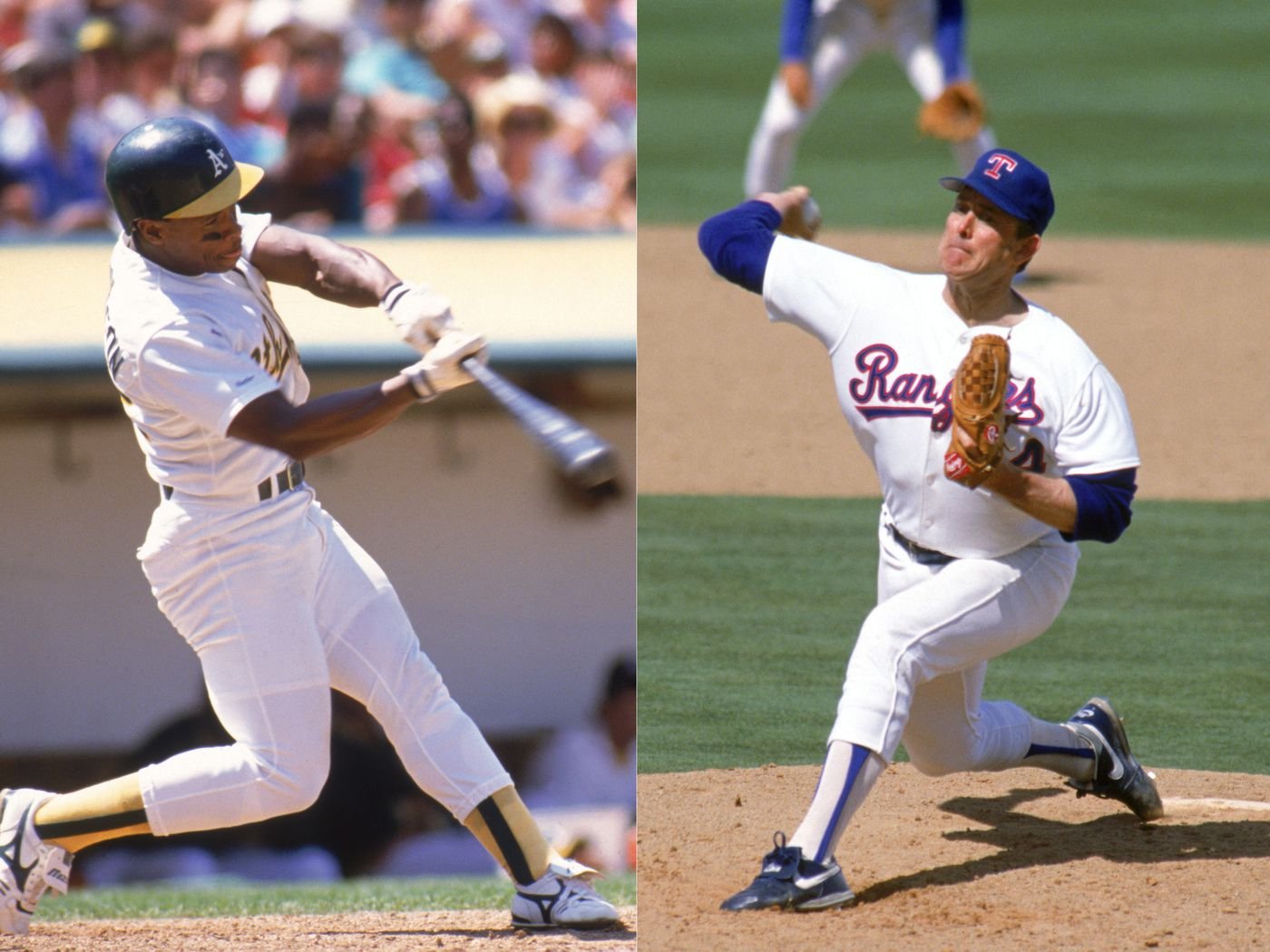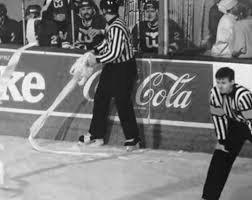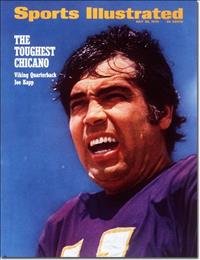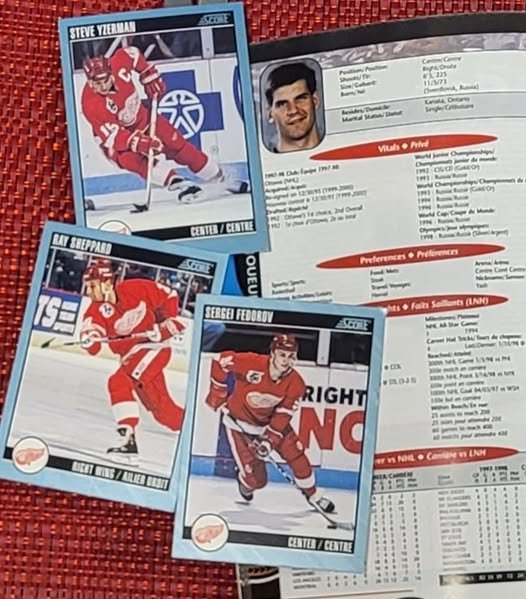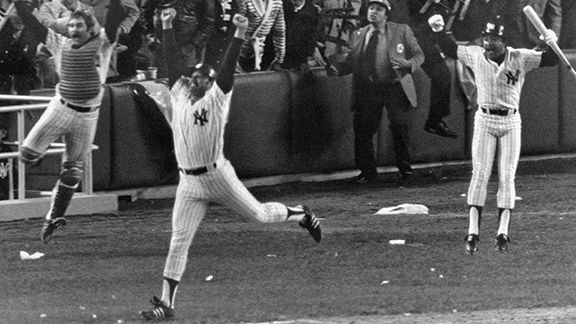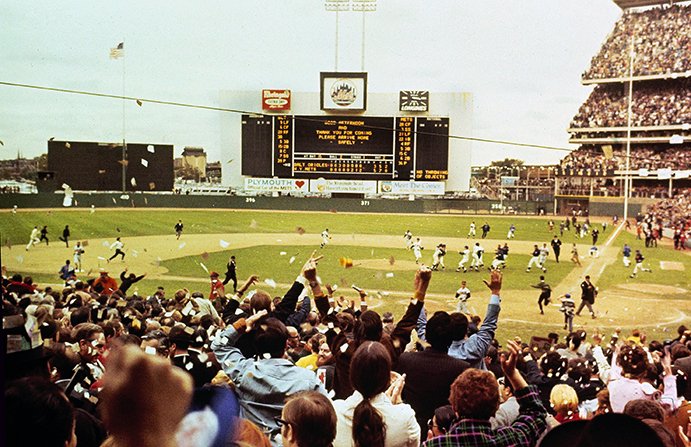by Howie Mooney
The Mayor’s Trophy.
Such a quaint sounding award. It’s something that is definitely evocative of a different, simpler time. And it’s something that many people under the age of 40 may not even be aware of. Or perhaps 50…or even 60. How many people would know what it is, where or when it comes from or who competed for it? Let me give you a hint that may make it obvious for some and may not help others at all.
Do you remember the Pearson Cup? The Pearson Cup was a trophy that was awarded to the winner of an annual in-season ‘exhibition’ game between the Toronto Blue Jays and the Montreal Expos. The games were originally played during the regular season between 1978 and 1986 and were intended to raise money for kids’ minor league baseball in Canada. The trophy was named after former Canadian Prime Minister Lester B. Pearson, who was a rabid baseball fan.
So…I hear you asking, “Was the Mayor’s Trophy given to the winner of a baseball game?” The answer to that would be ‘yes’. But what baseball game might that be? I’m glad you asked. The Mayor’s Trophy was awarded to the winner of an exhibition baseball game played during the regular season between the New York Yankees and either the New York Giants or the Brooklyn Dodgers. That lasted from 1946 until 1957, when, after that season, both the Giants and Dodgers fled Gotham for the burgeoning climes of the west coast.
In the first couple of years of this wondrous spectacle, the event was played in a best-of-three series. The Mayor’s Trophy series began as a showdown between the National League Giants and the Bronx Bombers from the Junior Circuit. By 1951 though, the Brooklyn Dodgers were involved in the whole attraction. Through the first five years, the Yankees had won six of the games played and the Giants had been victorious once.
In 1951, the Dodgers took the Yankees to extra innings before succumbing 4-3 in ten innings. The Yankees won again in 1952 before the Dodgers finally turned the tables on the Bombers at the end of June of 1953 by walking all over them 9-0. The winning pitcher was the 20-year-old Johnny Podres. The game had been played at Yankee Stadium and the 56,136 in the seats was the largest crowd that had assembled at ‘The House That Ruth Built’ all season to that point.
In 1954, the Dodgers managed just two base hits, but they still emerged as the winners by a 2-1 score. Duke Snider homered in the fourth inning and Jim Gilliam’s eighth inning single scored Don Hoak for the winning run. The next year, the Dodgers were not invited to defend their title and the Yanks knocked off the Giants 4-1. This one had a preliminary match between “Toots Shor’s Crumbums” and the “21 Club Gentlemen”.
In 1956, the game was under a temporary moratorium and wasn’t played. Apparently, the only date that the Yankees and either National League team had mutually free was August 13 and none of the teams had either the time or the inclination to want to play that year. In 1957, the Yankees won by a football score, 10-7, before an estimated crowd of 30,000 at Ebbets Field. There was a home run derby that preceded the game. Mickey Mantle participated and dazzled the masses.
After the 1957 season, both the Giants and the Dodgers left New York for San Francisco and Los Angeles respectively. What had been the real meaning of The Mayor’s Trophy, the baseball championship of The Big Apple, had become kind of meaningless. There were some who had the will to continue the series, but the participation of the former New York teams was one of those things that suddenly fell somewhere between ‘hopeful’ and ‘we’ll see what happens’.
In 1958, a meeting was arranged between the Yankees and the Milwaukee Braves. About 13,000 people showed up for the game. The Braves won it 4-3. Their manager, Fred Haney, used nine pitchers for an inning each. Sal Maglie started the game for the Yankees, and he went seven good innings. Johnny Kucks gave up two runs in the eighth and took the defeat. Milwaukee’s Bob Rush worked the seventh and got the win. There was no game scheduled for New York in 1959.
On May 7, 1959, a game was played at the Los Angeles Coliseum between the Yankees and Dodgers and was billed as a benefit night for Roy Campanella. 93,103 people showed up to see the Yankees dump the Dodgers 6-2. Approximately $60,000 was raised for him. Campanella was the Brooklyn Dodgers’ catcher from 1948 to 1957. On the night of January 28, 1958, he locked up the Harlem liquor store that bore his name and he drove home. He was driving a rental car that did not have snow tires.
Campanella lived on the north shore of Long Island and as he was getting close to his home in Glen Cove, he hit some ice on a winding part of the road. He skidded off the road and into a telephone pole. The car overturned and, in the flip, Campanella suffered a broken neck, and his spinal cord was compressed. He was left paralyzed from the shoulders down. Eventually, he was able to regain the use of his arms and hands, but he was never able to walk again.
He never made it to play in Los Angeles as a Dodger.
But the Dodgers and Yankees played the game in his honour in order to help him. They played another game the following year in New York in front of more than 53,000 vocal fans and managed to put another $58,000 together for Campanella and his medical bills. That crowd was the biggest at Yankee Stadium in all of 1960. The Dodgers won the game 4-3 as well.
In 1961, the game was again played in the Bronx and for the first time in a while, their opposition was the San Francisco Giants. The game was played on a Monday night, and, for the Giants, the game was sandwiched between a Sunday double header in Cincinnati and a Tuesday afternoon game in Pittsburgh. The Giants dropped both ends of that double header in Cincy too.
The weather that evening around Yankee Stadium was hot, muggy, and foreboding. There was audible thunder and visible lightning in the area too. The return of Willie Mays to New York was not unnoticed. Joe King of The Sporting News wrote that Mays “drew what amounted to a continuous ovation whenever he was on the field, and at times, it thundered louder than the turbulent storms which had almost washed away the game.
In fact, it was Mays that hit a two-run single that allowed his team to take a lead in the game. The Giants, behind six solid innings from Bobby Bolin, won the game 4-1. The only Yankees’ run came off a solo homer by Mickey Mantle. More than 47,000 fans showed up on that steamy, humid night in The Bronx. And the Giants won the next day in Pittsburgh too.
This game marked the end of an era. It was the last Mayor’s Trophy game the Yankees played against either the Giants or the Dodgers. There would not be such a game in 1962. The period from 1949 to 1958 was one in which there was a team from New York in every World Series. From 1947 to 1964, a window of eighteen years, there were only two Octobers that did not include a team from The Big Apple. In Ken Burns’ mini-series, Baseball, New York during that time was called The Capital of Baseball, and the moniker was well-earned.
But by 1958, there was only one baseball team in New York. The Dodgers and Giants left town for the west coast after the 1957 season. Then, in 1962, along came the New York Mets. There were now two baseball teams in New York again and they played in different leagues. There was an opportunity to revive The Mayor’s Trophy game again. None was planned for 1962 of course, but…..
By 1962, the world was a different place from the one that existed when The Mayor’s Trophy games started in the late 1940s. As John F. Kennedy was the new president and he ushered in ‘The New Frontier’, it was like this new age was made for the Mets. Or…the Mets were made for the new age! Socially and societally, America was changing.
Writers like Jack Kerouac, William S. Burroughs, Allen Ginsberg, Ken Kesey, Lenny Bruce, Mort Sahl and even Bob Dylan were espousing new ideas, new lives and lifestyles for American youth that would have been very unfamiliar in the 1940s and 1950s.
In Major League Baseball, black players began to participate in increasing numbers since Jackie Robinson broke the colour barrier with the Dodgers in 1947. In the 1950s and 1960s, teams had relocated, and new teams had moved into the established leagues. For six decades, there were just sixteen teams in the major leagues – eight in each. Now as the 1960s dawned, that number would be growing. Once again, there was a National League team in New York to play alongside the American League’s Yankees. The country was changing and so was baseball.
People were moving out of the cities and into the suburbs. They were heading west and south, The ways fans enjoyed baseball would change as well. Television would bring the game to people in a whole new way. Baseball was attracting new viewers and new fans. And the differences between the new fans and the older purists were becoming quite evident, especially when looking particularly at the fan bases and fan experiences present at Yankees and Mets’ games.
In order to attract fans, the new kids on the baseball block had to offer a different experience. And going to a Mets’ game was indeed a very different experience. It was pretty much assured that the expansion team was going to perform poorly but the younger fans didn’t care.
The Yankees were used to winning titles and being champions and that feeling extended to their fan base as well. The Mets had no winning history to draw upon and had little in terms of quality to offer their fans and so the idea at Mets’ games at the Polo Grounds or Shea Stadium was to have a good day at the ballpark. Casey Stengel had managed in The Bronx from 1949 until 1960 and now he was managing the new team in New York. He could see how the fans at Mets’ games were a little different. Of course, Stengel was a little different too.
“They’re the most amazing fans I’ve ever seen in baseball. I’ve been in World Series games. I’ve played before 96,000, but the Mets’ (fans), I’ll have to say, stick by ya. They stick by ya in the hotels. They’re on the streets, they’re carrying placards. They’re goin’ through the place. You’ll find them over here in right field. Four innings later, if you get a base hit, they’ll be over on the left field line. They make up wonderful placards. Their placards are terrific. I even have to stop and look at ‘em. I think I’ve made fifteen mistakes this year reading the placards instead of watching the pitcher, or watching the hitter, to take my men out.”
Stengel said all this in a television interview around 1962. It was shown on Ken Burns’ Baseball miniseries. The way he said it was almost as a stream of consciousness, with hardly a breath having been taken. But one thing that Stengel may have been trying to explain was that Mets fans were mostly younger and were very excited to have a team to cheer for that was ‘theirs’ and that they could do it in their own way.
At some point, someone came up with the brilliant idea that there should be a revival of The Mayor’s Trophy game and that it should now be between the Yankees and the Mets. There was no game organized for the Mets’ inaugural season, 1962, but there was one set up for the next year. It was originally scheduled to be played on June 3, 1963, at Yankee Stadium. Sadly, it rained that day, so it was moved back to June 20.
Remember that Casey Stengel had managed the Yankees from 1949-60. His run in The Bronx ended when his Yankees lost the 1960 World Series to the Pittsburgh Pirates after Bill Mazeroski hit the walkoff home run in the seventh game of that series to give the Bucs victory. Soon after, Stengel was relieved of his duties as the team’s field boss. It was put forth that Stengel, at 70, was too old to be managing anymore.
At a press conference to announce his termination, Yankees’ co-owner Dan Topping would not answer questions from reporters directly about his now former manager. It was then that Stengel took the microphone and was asked if he had been fired. “Quit, fired, whatever you please, I don’t care.” Topping then stated that Stengel was being let go because of his age and he suggested that the decision to terminate him would have been made whether the Yankees had won the World Series or not.
Stengel was quoted as saying to that, “I’ll never make the mistake of being 70 again.”
One of the reasons that the Yankees fired Stengel was no doubt his age, but also, Ralph Houk was available and he was seen by the Yankees’ brass as a superior manager to “Ol’ Case”. Stengel did receive offers to manage other major league teams (the Tigers, the San Francisco Giants and the expansion Los Angeles Angels), but he chose to spend his time with his wife, Edna, in Glendale, California. In 1961, he spent his time as vice president of the Glendale Valley National Bank, which was owned by members of Edna’s family.
When the Mets’ franchise was awarded to Joan Payson and M. Donald Grant, they hired former Yankee general manager George Weiss as their GM. Weiss wanted Stengel to manage the new Mets. At a press conference on October 2, 1961, almost a year after he was let go by the Yankees, Stengel was announced as the field boss for the new Mets.
New York Times columnist Leonard Koppett suggested that Stengel took the job so he could give something back to the game that had been his life for the previous fifty years. Weiss figured the team would lose a lot of games early on but that he and his scouts could build a team that would contend in about five years or so.
The Mets picked up some ‘name’ players who were past their prime in the expansion draft. Gil Hodges, Don Zimmer, Roger Craig and Frank Thomas were selected. Before any of those players were taken though, the Mets got nondescript catcher Hobie Landrith. “You have to have a catcher, or you’ll have a lot of passed balls,” explained Stengel.
Spring training in 1962 went reasonably well for the Mets. They won almost as many games as they lost. In a preseason game against the Yankees, Stengel played it to win, and he put all his best pitchers out against the Yankees kids. The Mets won 4-3. Stengel was happy to get the win, but he was, of course, realistic about his team. “I ain’t fooled,” he said. “They play different when the other side is trying too.”
Come April, the games got real. The Mets did not. Stengel’s boys lost their first nine games in their very first season. Conversely, the Pirates won their first ten. Less than a week and a half into their inaugural campaign, the Mets were 9 ½ games out of first place. There was a period of time in May when they won 11 out of 18 and got as high as eighth place, but then they dropped 17 straight. On the season, the Mets won 40 games and lost 120 in 1962.
Stengel had a knack of knowing when to step forward and take the spotlight with reporters and standing back and allowing his players to shine. Joe Durso began covering baseball in 1950 and he saw this in the old manager. “On days when his amazing Mets were, for some reason, amazing, he simply sat back and let the writers swarm over the heroes of the diamond,” Durso wrote at the time.
“On days when the Mets were less than amazing – and there were many more days like that – he stepped into the vacuum and diverted the writers’ attention, and typewriters, to his own flamboyance. The perfect link was formed. And it grew stronger as the team grew zanier.”
The 1963 season dawned pretty much the same way 1962 did for the Mets. They lost their first eight games. Then they came home and won four straight games against the Milwaukee Braves before going back on the road and becoming the bad old Mets again. By the end of April, they had a record of 7-12. The Yankees were off to a slow start and were sitting at 8-6.
By the end of May, the Mets were at 18-31 and the Yankees were at 25-15. On June 19, The Yankees were back on the top of the American League at 36-23 while the Mets were last in the National League at 25-43. The next day, the Yankees would host the Mets in the newly reminted Mayor’s Trophy game. Casey Stengel would be returning to the scene of his many triumphs as manager of the dominant Yankees and also the scene of his humiliation when he was let go.
And he would manage the game as though he was presiding over a team in the seventh game of the World Series. Oh, and Mets’ fans felt pretty much the same way.
“The amazing thing happened which was that New York took this losing team to its bosom,” writer and essayist Roger Angell told an interviewer for Ken Burns’ Baseball. “Everybody thinks that New York only cares about champions, but we cared about the Mets. I remember going to some games in June that year and they were getting walloped. They were getting horribly beaten, but the crowds came out to the Polo Grounds in great numbers.”
“And people brought horns and they blew these horns. And after a while, I realized that this was probably anti-matter to the Yankees, who were across the river, and they’d won so long. Winning is not a whole lot of fun if it goes on. But the Mets were human! And that horn, I began to realize, was blowing for me because there’s more Met than Yankee in all of us. What we experience day to day in our lives is much more losing than winning which is why we love the Mets.”
The Mets’ fans reveled in their team’s mediocrity, and they went to the games, and they wanted to have fun. They brought their horns and their signs and their ‘placards’ as Stengel had referred to the banners they carried with catchy phrases and slogans on them. They were different from the fans of the Yankees. They didn’t want to just sit and watch the game. They wanted to participate in and be a part of the game. They called themselves ‘The New Breed’ and they were a shock to the purists who had lorded over the game for what had seemed like forever.
On June 20, it seemed like the world discovered who ‘The New Breed’ was and the world was not inclined to put up with any of it. And that game, that night, became another of the great sporting memories in Big Apple baseball history.
50,742 people showed up at The House That Ruth Built that night and the majority of those were made up of ‘The New Breed’ of Mets fans. Upon arriving at the stadium, they were treated like the rabble the Yankees and their fans viewed them. Most of them had their signs and banners taken away from them before they got into the building. That eventually didn’t matter. They were going to make that night ‘their’ night, regardless. And Casey Stengel would be their facilitator.
Yes, this was, of course, an exhibition game. It mattered not in the standings, but in the big picture, for the Mets’ fans in attendance, it was a stab at relevance. And for Stengel, it was some retribution for his dismissal less than three years previous.
Before the game, Stengel was a bag of anxiety. He told Stan Isaacs of Newsday while they were still back at the Polo Grounds and before they got on the bus to cross the Harlem River to get to Yankee Stadium, “I’m so nervous. I don’t know what to do with myself!” He had some visitors there and wanted to find them to help pass the time. “They say a couple of drinks help you when you’re nervous, but I never have needed them. Sometimes, I take a pill.” On the bus ride, Stengel gave his team one message, “This is the one you want to win all year. This is the one, if you can win it.”
When the bus finished the half-mile trip from one park to the other, it entered through a gate at Yankee Stadium that leads behind the visitors’ bullpen beyond right field. As Newsday’s Joe Donnelly wrote, “The tipoff to a good night ahead (for the Mets) was that the bus didn’t break down.” The players were already in their grey road uniforms and walked through and on to the field. There was a chorus of vendors assembled in the adjacent bleachers who shouted, “Let’s Go, Mets!” as they emerged. That would be how most of the night would pass.
One thing to remember about this whole day was that, yes, the Mets and Yankees were playing their Mayor’s Trophy game that evening. But the Yankees played a home game in the afternoon, that actually mattered, against the Washington Senators. In that one, Yankees’ manager Ralph Houk, the man who was hired to replace Casey Stengel, was ejected while protesting a quick pitch from the Senators’ relief pitcher, Jim Coates.
The Yanks won 5-4 on a walk-off two-run Bobby Richardson double in a game that took almost three hours to play. The victory was their seventh straight. According to the box score in the paper, just under 9,000 fans were there to see it. So, with a real win under their belts, the Yankees prepared for the second game of their odd twi-night double-header.
As Ol’ Casey found his spot on the bench in the dugout, someone brought a note that had been left for him in the visiting manager’s office. Written on the yellow piece of paper was “Casey, go get them. Sorry I missed you. Thanks for everything and the best always. Gil.” Gil Hodges had played eleven games with the Mets that year before retiring as a player. He was the third manager of the Washington Senators’ in that horrible 1963 season. Hodges would finish the year managing the team and continue to lead them until the end of the 1967 campaign.
Jimmy Piersall would lead things off for the Mets against Yankees’ starting pitcher Stan Williams. He pounded a pitch hard into right-centre field. Piersall was thinking double all the way. He shouldn’t have. But the throw from Joe Pepitone to shortstop Clete Boyer bounced past him allowing Piersall to slide in safely. A couple of outs later, with Piersall on third, Williams uncorked a pitch that bounced to the screen. Before catcher Elston Howard could pick up the ball, Piersall rambled home and gave the Mets’ fans in attendance a show by sliding hard into the unattended plate, springing up immediately and declaring himself emphatically safe!
Howard drove Bobby Richardson home with a run to tie the game in the bottom of the first. But the Mets would shred Williams in the top of the third by sending ten men to the plate and scoring five runs. The score stayed at 6-1 for most of the game until Joe Pepitone banged out a solo homer in the bottom of the ninth to end the game and send the New Breed home happy. It took a while, and there may have been some property damage, but eventually they left the stadium and headed home.
Casey managed this game to win. He left his starter, Jay Hook, in for the first five innings. In the sixth, he brough Carl Willey in to relieve Hook. Willey was generally a starting pitcher. In fact, he was Stengel’s best starter. He pitched the rest of the game. The only hit he gave up was the home run to Pepitone.
But the real story of the game wasn’t the win by the visiting team – although that was certainly newsworthy. The real story was the invasion and the performance by the Mets’ faithful. They started early and they stayed late. They chanted, they cheered, they stomped, they swore and some of them were unruly. And with or without their banned signs (and most of them were without, having had them taken away at the gates), they made their presence known.
The confiscation of their banners might have contributed to their show of attitude. It all started about thirty minutes before the game started. That was when Casey Stengel walked out of the dugout to take a walk across the infield. The crowd let out a thundering roar as he strolled slowly along the grass. He waved his bony fist and the fanatics screamed more. A group of Mets fans that called themselves ‘The Sanitation Department’ played Casey off the field with the old tune ‘Sentimental Journey’.
A writer for the Associated Press noted that a teenaged girl gushed to the boy she was with, “There’s Casey! There’s Casey! There’s Casey!” The boy looked down at the field in awe. As the fans were filing in, the Yankees’ players were looking on with a mix of derision and amusement. The Bronx Bombers were looking more at October than they were at whatever happened in this game, so that might have been expected.
Whitey Ford was out on the field standing next to Elston Howard and pointing and commenting on fans as they found their seats. “Look, Ellie. He’s not one of our fans. He came out just to get on you. When you go out there, he’s going to be yelling, ‘Hey, Howard. You can’t carry Choo-Choo’s glove!’” Choo-Choo Coleman was the Mets’ catcher.
Every Mets’ player that was announced was greeted with massive cheers. Each of the Yankees were booed unmercifully. The Associated Press noted, “Probably never has a team been so thoroughly booed and jeered on its home field as were the Yankees. The biggest boo was saved for Roger Maris who flied out as a pinch hitter in the seventh.” It was reported that one fan fell out of his box seat as Jimmy Piersall doubled to start the game.
Newsday’s Donnelly described the Mets fans that were seated right behind their team’s dugout as “the cast of Naked City”. The fact that the Mets got ahead by five early and the score stayed that way probably helped the Mets fans really enjoy the evening too. And no doubt, they enjoyed some liquid encouragement as well.
In 1962, the Yankees had won the World Series in seven games over the San Francisco Giants. Their championship banner flew proudly over the stadium in centre field. After the game ended, there was more jocularity. Some of the Mets’ fans, perhaps feeling slighted by having their stuff taken away as they entered the game earlier in the night, figured they would try to steal that Yanks’ championship pennant. They were unsuccessful. Police did the best they could to round them up and escort them out.
After the game, Pete Previte, the Yankees’ equipment man, told his players not to exit the park the way they usually do. “Don’t go out through the front,” Previte told them. “They’re crazy out there. The cops are inside the ballpark trying to clear the field. Go out the back way.” As they did back then, fans crashed the field almost at will. It’s hard to imagine today, but back then, it happened with regularity.
There were a number of reports of people throwing firecrackers in the stadium. In the seventh inning, someone threw a smoke bomb on to the field between home plate and the mound. Despite the shenanigans, everyone left the park without any kind of major incident. “There were no arrests,” remarked Lt. Bernard Toner who was in charge of the stadium police. As the game went on, the Yankees’ players kept themselves under the cover of their dugout as much as they could.
Charlie Neal was the Mets’ third baseman. John Ryan of The Hackensack Record wrote about him, “Neal, who usually plays third base as though he’s waiting for his social security, came up with two fine plays and hustled on the basepaths and on ordinary ground outs. He looked like the ball player many believe he can be.” Neal made great plays in the third and ninth innings. Ryan asked Stengel about Neal’s game. “Neal looked out there like the third baseman they have (Clete Boyer). He made a few rousers out there.”
When Ryan asked Stengel for his comments on the way his team played, he was candid. “Well, I thought the game was very fine. My pitchers looked very good, and we fielded as though we should do it every day, but (and here, he winked) we don’t. Maybe it’s the big ballpark here, but I think it could be all the people rooting so loud. It kept us awake.”
Ralph Houk made the comments that many suspected he might make. “We won the game we wanted to win (the game against Washington in the afternoon). You like to win but this was still only an exhibition. I’d have felt worse if they hit Ralph Terry, Jim Bouton or Whitey Ford.” When Ryan asked Houk about all the Mets’ fans that showed up, the Yanks’ manager was succinct. “They sure are lively!”
“Lively” is one way to describe them. George Ross of the Oakland (Ca.) Tribune was a little more direct than Houk was. “The Mets – and the New Breed – took the Yankees apart,” wrote Ross in his paper the next day. “They exploded firecrackers and they exploded with a five-run third inning, an uncontrolled explosion which linked together three singles, two walks, two wild pitches and a double by Al Moran, whose last big day in baseball came in 1958 when he broke in with the Memphis Chicks and went five-for-five.”
Headlines the next day screamed things out like “New Breed Whoops It Up”, “Mets Fans Leave Stadium In Tatters” and “Stadium In Uproar, New Breed Goes Wild”. The Mets and their fans tore up Yankee Stadium that June night. They held the bragging rights in The Big Apple for a while. But by the end of that season, things were about where they were supposed to be. The Mets were tenth out of ten in the National League and the Yankees were heading to the World Series. Again.
The two teams played their Mayor’s Trophy games nineteen times over the period between 1963 and 1983. The Mets won eight of their meetings and the Yankees won ten. One game finished in a tie. It’s hard to imagine that any of those other games could have been as eventful or as fun as that wild affair back on that June night in 1963.
It’s easy to look at that game in the context of what happened on one night. With the win over Washington on the afternoon of June 20, the Yankees had a record of 37-23. After that Mayor’s trophy game and the loss to the Mets, the Yankees lost just 34 more games the rest of the American League season. They won 67 to finish with a record of 104-57. The next best team in the AL was the Chicago White Sox who ended their year 10 ½ games behind New York.
Roger Maris only played 90 games for the Yanks in 1963. He was 28 years old. Mickey Mantle was 31 and got on the field just 65 times. In the World Series, the dreaded Bronx Bombers scored just four runs in four games and were swept by the Los Angeles Dodgers. In 1964, New York finished a game ahead of the White Sox and two games up on the Baltimore Orioles. The World Series went seven games this time, but it was the St. Louis Cardinals who came out on top.
By the end of the 1964 season, Dan Topping and Del Webb had sold the Yankees to CBS. Over the previous three seasons, Topping and Webb had been cutting back on the money they put into their farm system and as a result, didn’t have adequate replacements for players like Mantle, Maris, Elston Howard and Whitey Ford. The next year saw the team finish in sixth place, eight games below .500.
That ’64 season was the last time the Yankees would see a World Series until the late 1970s. By that time, George Steinbrenner had bought the team from CBS and had been the owner for five years. His bombastic leadership, free agency and his determination to exploit it in order to succeed helped get the team back to the top of the American League after their years of wandering the desert.
Sure, they were nicknamed ‘The Bronx Zoo’, but they won the 1977 World Series. They staged a monumental in-season comeback after seemingly self-immolating in 1978 to win another world’s championship too. (Remember Bucky Dent’s homer in Game #163 in Boston to end that regular season?) That era of the team and baseball seemed to usher us all into the modern age with free agency, labour strife, the splintering of television and money, money, money.
On the night of June 20, 1963, the Mets may have enjoyed that bus ride back to the Polo Grounds. And why not? It was one of the best nights in the young franchise’s very brief existence. They went back into National League play the next day with a record of 25-43. The rest of that year, they would win just 26 more ball games. They would lose 68 more. Their record at the end of the ’63 season was better than it had been in 1962, but at 51-111, there was still plenty of room for improvement.
The basement looked like it would be their primary residence for a while. In 1964, they found themselves there again, after compiling a record of 53-109. They regressed in 1965, posting a mark of 50-112. In 1966, the team was mocked in an episode of the television sitcom Bewitched when, while watching a local Soap Box Derby race, the Stephens’ neighbour, Abner Kravitz, gets excited because he heard the Mets got the bases loaded!
The Amazin’s did manage to get themselves out of last place in ’66. They finished in ninth place with a record of 66-95, which was 7 ½ games better than the Chicago Cubs who came home at 59-103. The next season, it was back to the cellar for the Mets though. In 1968, they finished ninth again and won 70 games for the first time. As though that could be looked at as an accomplishment.
In 1969 though, they achieved what could only have been perceived as impossible. Expansion added two new teams to each league that year and divisional play began. The NL and AL each grew to twelve teams and in order to facilitate that, East and West Divisions were born. The Mets were placed in the National League East and were looking up at the Chicago Cubs for most of that year.
But in September, the Mets got hot and passed the cursed Cubbies taking the division. They finished with 100 wins (!) and played the Atlanta Braves (who had moved from Milwaukee to start the 1966 campaign) in the new National League Championship Series and won. People freely throw around “They shocked the world” when describing uncommon sporting events but, in 1969, the Mets truly did shock the world! They would face the now-juggernaut Baltimore Orioles in the World Series.
With Earl Weaver managing the team, Mike Cuellar, Dave McNally and a young Jim Palmer as starting pitchers and Boog Powell and Frank Robinson anchoring their batting order, the Orioles were supposed to make short work of these upstart Metropolitans. New York could counter with 25-game winner Tom Seaver, Jerry Koosman and Gary Gentry as starters, Tommie Agee as their biggest hitter and a bullpen that featured Ron Taylor and Tug McGraw (who tallied 13 and 12 saves, respectively).
The Orioles took the first game at home, but New York shocked everyone by taking the next four games to cap their first ever winning season with a championship! Donn Clendenon, who had been playing for the expansion Montreal Expos until they traded him to the Mets in June, hit three homers in the series to garner Most Valuable Player honours.
Gil Hodges – remember his note to Casey Stengel before the 1963 exhibition game at Yankee Stadium – was the Mets’ manager by this time. Hodges had taken over the managerial duties of the team before the 1968 season. But, hey…what happened to Ol’ Casey?
In 1964, the Mets had moved into beautiful new Shea Stadium in Queens. Upon seeing it, Stengel remarked, “the park is lovelier than my team”. But, with all the losing, the love affair between the fans and Casey began to fade. Howard Cosell, who was just a New York sportscaster at the time, and even Jackie Robinson, criticized Stengel, saying that he was ineffective, no longer the man to be leading the club and even prone to dozing off in the dugout.
As 1965 came, Stengel was given another contract, even though it had been written that the owners of the team privately wished he would have retired. The team’s play on the field was not getting any better. On July 25, at a team function at Toots Shor’s restaurant to honour the participants in the next day’s Old-Timers’ game, Stengel fell off a barstool and broke his hip. He spent considerable time in hospital and resigned as manager of the team on August 30.
On September 2, the Mets held a ceremony to retire Stengel’s number 37. He was there but needed a cane and moved with a pronounced limp. He was kept on as part of the team as a vice president, but spent his time back in Glendale, California with his wife. He was now out of the game. He would attend World Series, especially when the games were in California, but any connection he had with the game was now ceremonial.
Baseball writers loved him and upon his retirement, figured that it would be cruel to make him wait the five years for election into Cooperstown, and they waived that rule for Stengel. In March of 1966, he was invited to St. Petersburg, Florida, the Mets’ spring training site, for a surprise ceremony informing him that he would be inducted into the Baseball Hall of Fame, along with Ted Williams.
Stengel still participated in Old-Timers’ Days, especially at Shea Stadium. In 1970, the Yankees invited him to their day to honour former players. While there that day, they let him know that his 37 would be retired in pinstripes as well. With new ownership at the helm, Stengel no longer felt the animosity he had previously held with the Yankees, and he happily accepted their invitation. He passed away September 29, 1975.
The history of The Mayor’s Trophy is a fun one. And the fact that it had Casey Stengel playing a role in the series, and a major role in one of the most notorious pieces of it makes it doubly fun.
Casey Stengel is also a part of baseball history and his enshrinement in the Baseball Hall of Fame is indeed deserving. He left such a mark on the game and with the people who crossed his path. When Casey passed away, Richie Ashburn, who played on the original 1962 Mets and himself a Hall of Famer, said “Don’t shed any tears for Casey. He wouldn’t want you to. He was the happiest man I’ve ever seen.”
New York sportswriter Maury Allen wrote about Stengel, “He is gone, and I am supposed to cry, but I laugh. Every time I saw the man, every time I heard his voice, every time his name was mentioned, the creases in my mouth would give way and a smile would come to my face.” The Los Angeles Times’ writer Jim Murray wrote, “God is certainly getting an earful tonight.”
Casey Stengel used his words in often peculiar ways and writers had a name for the way he spoke English. They called it Stengelese. At Forest Lawn Cemetery where he and Edna are interred side by side, there is a quote from him. “There comes a time in every man’s life, and I’ve had plenty of them.”
Thanks, Casey.
* * *
Howie’s latest book MORE Crazy Days & Wild Nights, eleven new stories of outlandish and wild events that occurred in sports over the last fifty years,is available on Amazon. It’s the follow-up to his first book of 2023, Crazy Days & Wild Nights! If you love sports and sports history, you need these books!
You can hear Howie and his co-host Shawn Lavigne talk sports history on The Sports Lunatics Show, a sports history podcast, on Apple Podcasts, Spotify, iHeart Radio, TuneIn Radio and Google Podcasts and at firedupnetwork.ca on 212 different platforms. Check out The Sports Lunatics Show on YouTube too! Please like and subscribe so others can find the shows more easily after you. And check out all their great content at thesportslunatics.com.
The Sports Lunatics Show can now also be heard on Sundays at noon on CKDJ 107.9FM in Ottawa or online at ckdj.net .



